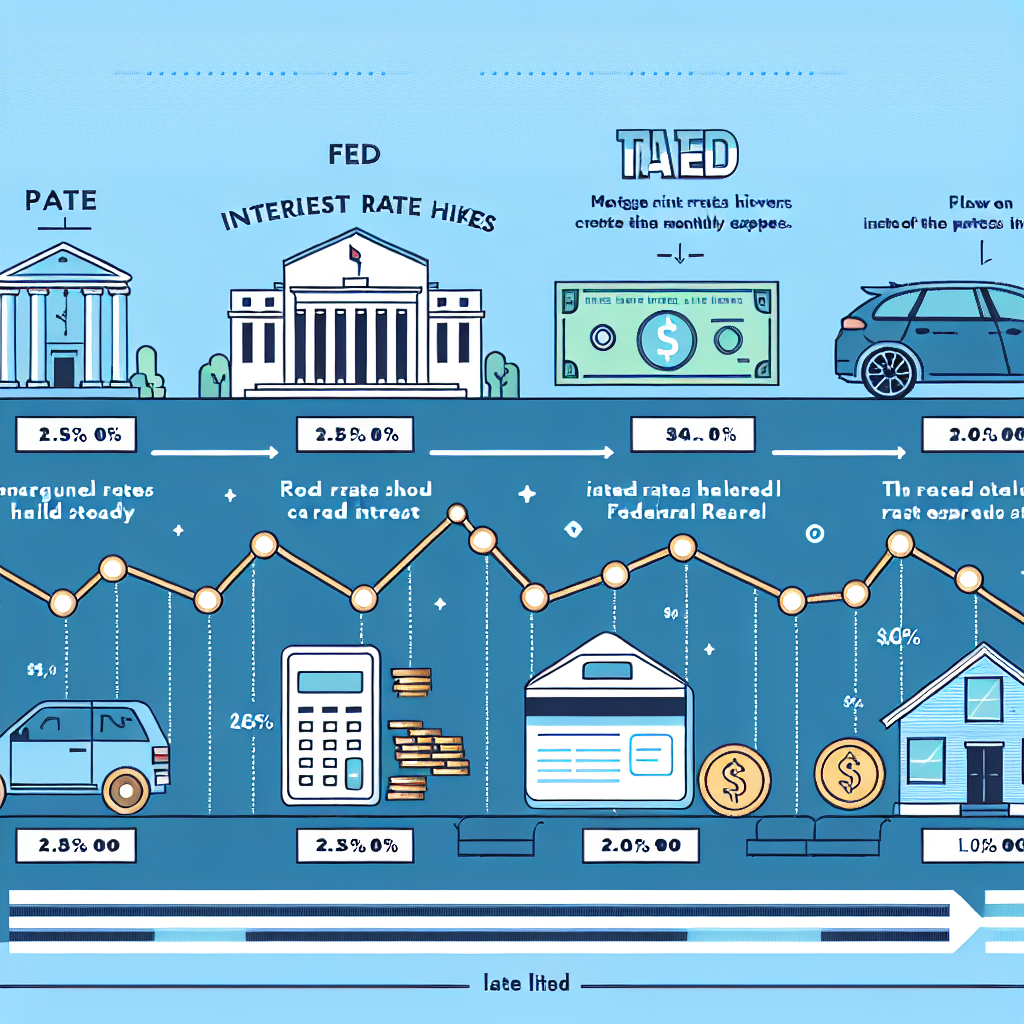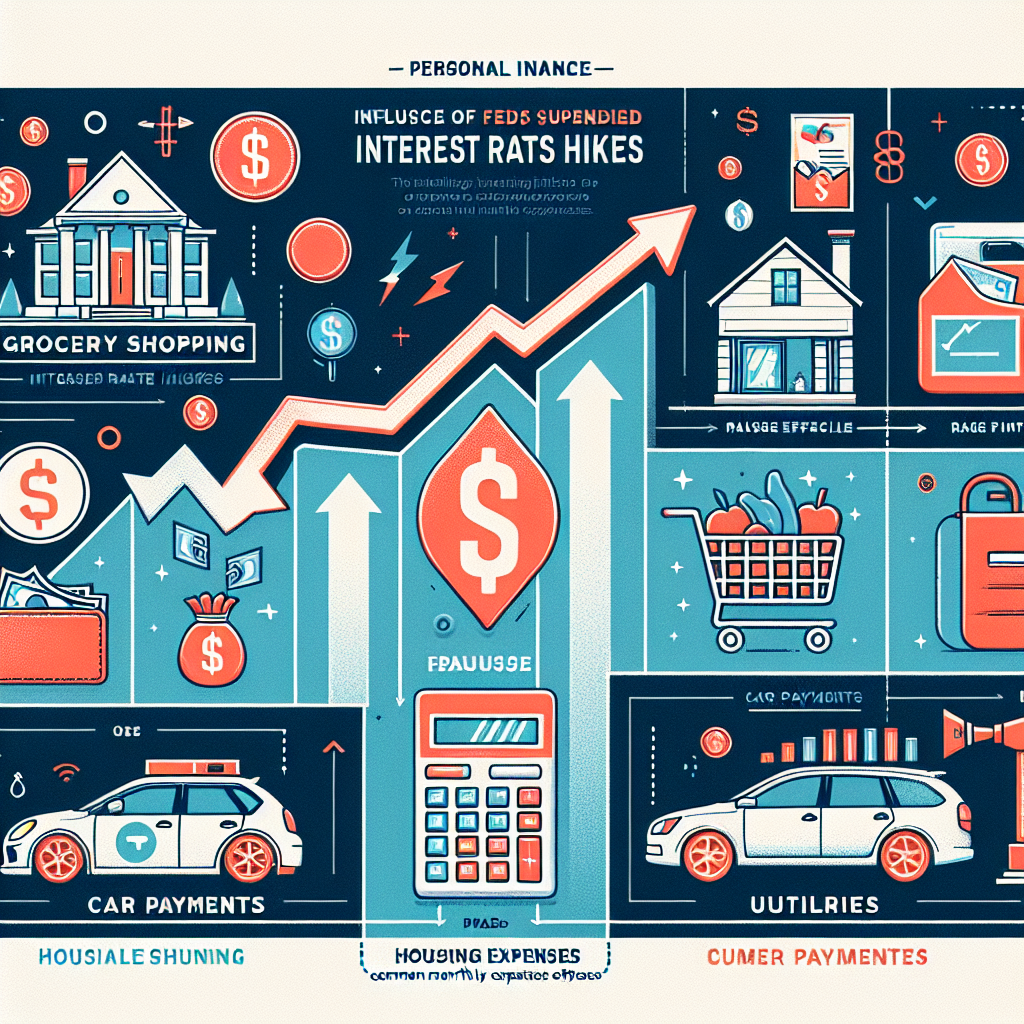-
Table of Contents
- The Fed Pauses Rate Hikes: Impact on Your Monthly Expenses Explained
- Understanding the Fed’s Decision
- Reasons for the Pause
- Impact on Your Monthly Expenses
- Mortgage Payments
- Credit Card Interest
- Auto Loans
- Student Loans
- Savings and Investments
- Case Studies: Real-World Examples
- Case Study 1: Homeowner with a Variable-Rate Mortgage
- Case Study 2: New Car Buyer
- Case Study 3: College Graduate with Student Loans
- Statistics: The Broader Economic Impact
- What to Expect Moving Forward
- Conclusion
The Fed Pauses Rate Hikes: Impact on Your Monthly Expenses Explained

The Federal Reserve, often referred to as “the Fed,” plays a crucial role in the U.S. economy by setting monetary policy, including the adjustment of interest rates. Recently, the Fed announced a pause in its series of rate hikes, a decision that has significant implications for consumers and businesses alike. This article delves into the reasons behind this pause, its potential impact on your monthly expenses, and what you can expect moving forward.
Understanding the Fed’s Decision
The Federal Reserve’s primary mandate is to maintain stable prices and achieve maximum sustainable employment. To do this, the Fed adjusts the federal funds rate, which influences borrowing costs across the economy. When the economy is overheating, the Fed raises rates to cool down inflation. Conversely, when the economy is sluggish, the Fed lowers rates to stimulate growth.
Reasons for the Pause
The decision to pause rate hikes is typically influenced by several factors:
- Economic Data: Recent economic indicators, such as GDP growth, unemployment rates, and inflation figures, may suggest that the economy is stabilizing.
- Global Events: International economic conditions, trade tensions, and geopolitical events can also impact the Fed’s decisions.
- Market Reactions: The Fed monitors financial markets to gauge investor sentiment and potential risks to financial stability.
In this case, the Fed’s pause likely reflects a combination of these factors, signaling a cautious approach to avoid derailing economic progress.
Impact on Your Monthly Expenses
The Fed’s decision to pause rate hikes can have a ripple effect on various aspects of your financial life. Here’s how it might impact your monthly expenses:
Mortgage Payments
One of the most significant areas where interest rates affect consumers is in mortgage payments. When the Fed raises rates, mortgage rates typically follow suit, making home loans more expensive. Conversely, a pause in rate hikes can help stabilize or even lower mortgage rates.
For example, if you have a variable-rate mortgage, your monthly payments could decrease or remain stable, providing some relief to your budget. Even fixed-rate mortgage holders might benefit if they are looking to refinance at a lower rate.
Credit Card Interest
Credit card interest rates are often tied to the prime rate, which is influenced by the federal funds rate. When the Fed pauses rate hikes, it can lead to a stabilization of credit card interest rates. This means that the interest you pay on outstanding balances may not increase, helping you manage your debt more effectively.
Auto Loans
Auto loans are another area where interest rates play a crucial role. A pause in rate hikes can lead to more favorable terms for new car buyers, as lenders may offer lower interest rates. This can reduce your monthly car payments and make financing a vehicle more affordable.
Student Loans
For those with student loans, the impact of the Fed’s decision can vary. Federal student loans typically have fixed interest rates, so current borrowers may not see an immediate change. However, private student loans often have variable rates that could benefit from a pause in rate hikes, potentially lowering monthly payments.
Savings and Investments
While lower interest rates can be beneficial for borrowers, they can be a double-edged sword for savers. A pause in rate hikes may result in lower yields on savings accounts, certificates of deposit (CDs), and other fixed-income investments. This means that the interest you earn on your savings might not grow as quickly.
On the investment front, lower interest rates can boost stock market performance, as companies benefit from cheaper borrowing costs. This can positively impact your investment portfolio, particularly if you have exposure to equities.
Case Studies: Real-World Examples
To better understand the impact of the Fed’s decision, let’s look at a few real-world examples:
Case Study 1: Homeowner with a Variable-Rate Mortgage
Jane, a homeowner with a variable-rate mortgage, has seen her monthly payments fluctuate over the years. When the Fed was raising rates, her payments increased, putting a strain on her budget. With the recent pause in rate hikes, Jane’s mortgage rate has stabilized, providing her with some much-needed financial relief. She can now allocate more of her income towards other expenses or savings.
Case Study 2: New Car Buyer
John is in the market for a new car and has been closely monitoring interest rates. With the Fed’s pause in rate hikes, he finds that auto loan rates are more favorable. John secures a loan with a lower interest rate, reducing his monthly car payments and making his new vehicle more affordable.
Case Study 3: College Graduate with Student Loans
Emily recently graduated from college and has both federal and private student loans. While her federal loan payments remain unchanged, she notices a slight decrease in her private loan payments due to the pause in rate hikes. This reduction helps her manage her monthly budget more effectively as she starts her career.
Statistics: The Broader Economic Impact
To provide a broader perspective, let’s examine some key statistics related to the Fed’s decision and its impact on the economy:
- Mortgage Rates: According to Freddie Mac, the average 30-year fixed mortgage rate decreased from 3.94% in 2018 to 3.11% in 2020, reflecting the Fed’s accommodative stance during that period.
- Credit Card Debt: The Federal Reserve Bank of New York reported that total credit card debt in the U.S. reached $820 billion in Q2 2021. Stabilizing interest rates can help consumers manage this debt more effectively.
- Auto Loan Rates: Data from Experian shows that the average interest rate for a new car loan was 4.21% in Q2 2021. A pause in rate hikes can help keep these rates affordable for consumers.
- Savings Rates: The national average interest rate for savings accounts was 0.06% as of August 2021, according to the FDIC. Lower interest rates can impact savers’ ability to grow their funds.
What to Expect Moving Forward
The Fed’s decision to pause rate hikes is not set in stone and can change based on evolving economic conditions. Here are some factors to watch for in the coming months:
- Inflation Trends: Keep an eye on inflation data, as rising prices could prompt the Fed to resume rate hikes to curb inflationary pressures.
- Employment Data: Strong job growth and low unemployment rates may influence the Fed’s decisions on interest rates.
- Global Events: Geopolitical developments, trade policies, and international economic conditions can impact the Fed’s monetary policy.
- Market Reactions: Financial market performance and investor sentiment will also play a role in shaping the Fed’s actions.
Conclusion
The Federal Reserve’s decision to pause rate hikes has far-reaching implications for consumers and businesses. By understanding how this decision impacts your monthly expenses, you can make informed financial decisions and better manage your budget. Whether it’s stabilizing mortgage payments, managing credit card debt, securing favorable auto loan rates, or navigating student loan payments, the Fed’s actions play a crucial role in shaping your financial landscape.
As you move forward, stay informed about economic trends and be prepared to adjust your financial strategies accordingly. By doing so, you can navigate the complexities of interest rates and make the most of the opportunities that arise from the Fed’s monetary policy decisions.








